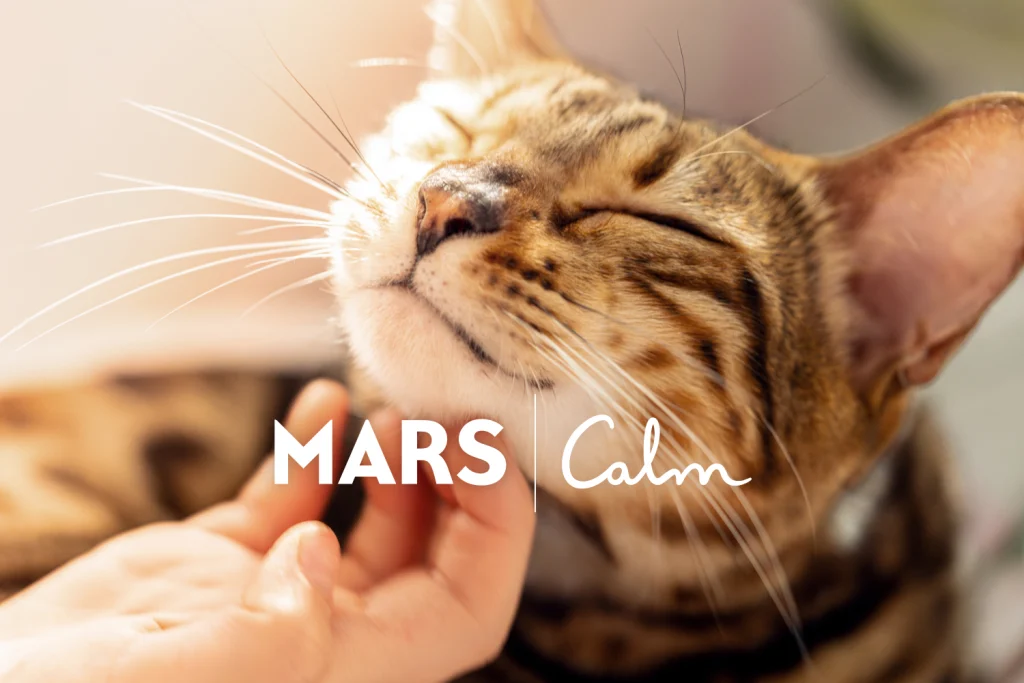Stress Management Techniques to Improve Pet Health

Understanding the Impact of Stress on Pets
Pets, like humans, experience stress. This stress can stem from various sources including environmental changes, lack of socialization, or even health issues. Understanding these aspects is crucial for pet owners aiming to enhance their furry friends’ overall well-being. Just as stress manifests in various forms for humans, it also varies in expression among different species of pets, particularly dogs and cats.
Common Stressors for Pets
Recognizing stress in pets is the first step toward alleviating it. Some common stressors include:
- Changes in routine: Pets thrive on routines. A sudden alteration, such as a new work schedule for their owner or changes in feeding times, can lead to anxiety-driven behaviors.
- New environments or moving: Relocating to a new home can be particularly disorienting for pets. Familiar scents and surroundings, which provide security, are lost in the shuffle.
- Loud noises, such as thunderstorms or fireworks: Many animals are sensitive to loud sounds, which can trigger panic-like responses, leaving them trembling or seeking shelter.
- Overcrowded living spaces: Pets can feel overwhelmed in a busy household, particularly if there is an influx of guests or new pets living in the same space.
- Insufficient mental or physical stimulation: Pets require exercise and activities that challenge their minds. Boredom can lead to destructive behaviors, indicating that they are not receiving adequate attention.
Identifying and managing these stressors can lead to improved health and happiness for your pet. A stressed animal can develop behavioral problems or health issues, such as:
- Excessive barking or meowing: This can become a vocal expression of anxiety or frustration, signaling that something is amiss.
- Destructive behaviors: Chewing furniture or clawing at carpets can be a physical manifestation of stress, as pets look for an outlet for their pent-up energy.
- Loss of appetite or overeating: Changes in eating habits can indicate emotional distress, where some pets may eat less due to anxiety, while others may overeat as a coping mechanism.
- Grooming issues, like excessive shedding: Stress often leads to changes in grooming behavior, demonstrated by excessive shedding or even self-harm in severe cases.
Why Stress Management is Essential
Effective stress management techniques not only enhance the quality of life for pets but also strengthen the bond between pets and their owners. By adopting proactive strategies, pet owners can foster an environment of calm and security. For instance, utilizing relaxation techniques such as calming music during thunderstorms can benefit animals prone to noise anxiety.
Additionally, engaging in consistent exercise routines—whether long walks for dogs or interactive play sessions for cats—can significantly reduce stress levels. Offering a safe space where pets can retreat when feeling overwhelmed is equally important. It is essential to recognize that each pet is unique and may respond differently to various stressors and stress-relief techniques.

In this article, we will explore diverse stress management techniques tailored for various types of pets. From simple lifestyle changes to engaging activities, these approaches can significantly impact pet health—both mentally and physically. Understanding your pet’s individuality not only helps in stress alleviation but also aids in creating a happier, more rewarding companionship.
DISCOVER MORE: Click here for insights on effective dog training
Practical Stress Management Techniques for Pets
To effectively manage your pet’s stress and enhance their health, a variety of practical techniques can be employed. These methods not only promote a sense of calm in your pets but also contribute to their overall health and well-being. Let’s delve into some of the most effective stress management techniques that pet owners in the United States can utilize.
1. Establishing a Routine
Pets thrive on predictability. Establishing a structured daily routine can significantly reduce anxiety levels. Consistent feeding times, exercise schedules, and play sessions help pets understand what to expect throughout their day. A steady routine is particularly helpful for dogs, who often look to their owners for cues. For example, incorporating regular morning walks followed by breakfast can create a predictable environment that soothes your pet’s nerves.
2. Safe Spaces
Creating a designated safe space where your pet can retreat during stressful times is essential. This space should be quiet and comfortable, featuring their favorite blankets or toys. Having a “go-to” spot allows your pets to feel more secure when faced with overwhelming stimuli, like loud noises or increased household activity. Think of this safe space as a personal haven—something every pet deserves!
3. Mental Stimulation and Enrichment
Boredom is a significant stressor for pets. Providing mental stimulation through engaging activities can keep their minds active and distracted from stressors. Options include:
- Interactive toys: Toys that dispense treats or require problem-solving can captivate your pet’s attention.
- Training sessions: Teaching new tricks or reinforcing existing commands not only provides mental stimulation but also strengthens your bond.
- Puzzle feeders: These can slow down mealtime, making it more stimulating, and are particularly beneficial for pets who tend to eat too quickly.
These activities encourage your pets to focus their energy on constructive tasks rather than on stressors, effectively reducing anxiety.
4. Calming Techniques
In times of heightened stress, certain calming techniques can be beneficial. Use of calming music or sounds designed specifically for pets can have a significant impact during stressful events, such as thunderstorms or parties. Many pet owners find that playing soft music or nature sounds helps their animals relax. Additionally, products like anxiety wraps or calming sprays infused with herbal ingredients can provide some relief for anxious pets.
5. Regular Exercise
Physical activity is essential not just for a pet’s health but also for their stress reduction. Regular exercise helps release pent-up energy and improves mood. Incorporating daily walks, playtime at the park, or engaging games like fetch can not only keep your pet fit but also significantly decrease anxiety levels. Activities that target both physical and mental endurance, such as agility training or scent work, can also be particularly beneficial.
Incorporating these stress management techniques into your pet care routine can offer substantial benefits, ensuring your furry friends remain healthy, happy, and well-adjusted. As each pet is unique, it may require some experimentation to find which techniques resonate best with your animal. Stay tuned as we explore more effective strategies tailored for specific types of pets.
| Technique | Benefits |
|---|---|
| Regular Exercise | Enhances physical health and improves emotional well-being. |
| Mindful Interaction | Creates a stronger bond between pets and owners, reducing anxiety. |
| Environmental Enrichment | Stimulates mental health, keeps pets engaged and less stressed. |
| Stress-Relief Tools | Utilizing calming products can significantly reduce anxiety. |
Exploring these various stress management techniques reveals not only their significance but also their direct impact on pet health. For instance, regular exercise is not merely about physical fitness; it promotes weight management and diminishes the likelihood of behavioral issues stemming from pent-up energy. Furthermore, enriching your pet’s environment ensures that they receive mental stimulation, which is crucial for preventing stress and anxiety. Additionally, mindful interactions such as grooming or simply spending time together foster a deep sense of security and companionship, vital for emotional health. These techniques are not just beneficial but essential in cultivating a holistic approach to pet wellness. Embracing these methods can lead to a happier, healthier life for your furry companions.
LEARN MORE: Click here for essential pet diet tips
Additional Stress Management Techniques to Enhance Pet Well-Being
Understanding your pet’s unique behaviors and needs is crucial in managing their stress effectively. While many techniques have already been explored, there are additional strategies that can further improve your pet’s emotional and physical health. These may involve leveraging natural instincts, social interactions, and even environmental adjustments.
6. Socialization Opportunities
Social interactions play a significant role in your pet’s emotional well-being. Many pets experience anxiety when they are not properly socialized. Introducing your pet to new environments, sounds, and other animals can build their confidence and lessen feelings of fear or isolation. Regular visits to dog parks, canine classes, or even playdates with friendly pets can enrich their social experiences. Furthermore, these interactions often lead to a happier demeanor, reducing stress levels considerably.
7. Natural Supplements
For pets that struggle with chronic anxiety, natural supplements such as CBD oil, calming chews, or herbal infusions can be effective options. Many of these products are formulated specifically for pets and may contain ingredients like valerian root or chamomile, which are known for their calming properties. Before introducing any supplements, it’s essential to consult with a veterinarian to determine the most appropriate products for your pet’s specific health needs.
8. Fostering Focus Through Training
Engaging in structured training sessions not only sharpens obedience skills but also enhances your pet’s ability to focus in stressful situations. Obedience training, agility courses, or even simple commands can provide a sense of purpose and mental stimulation for your animal. Incorporating clicker training or positive reinforcement techniques can make the experience enjoyable and allows your pet to associate training with rewarding outcomes. Additionally, this focused attention helps redirect their energy away from anxiety-provoking stimuli.
9. Aromatherapy for Pets
Aromatherapy is another powerful tool in stress management. Many pet owners in the United States have found success in using essential oils to create a calming atmosphere in their homes. Oils such as lavender and chamomile can be diffused gently in pet-friendly areas. However, it’s crucial to ensure that any oils used are safe for animals, as certain essential oils can be toxic to pets. Always consult a vet or a pet aromatherapy specialist before using these approaches to ensure your pet’s safety.
10. Environmental Adjustments
Sometimes stress can be alleviated by simply modifying your pet’s environment. This can include reducing noise levels, limiting exposure to frequent guests, or creating a more mobile atmosphere where pets feel secure. For example, using soundproofing materials or playing white noise can significantly help anxious pets during parties or celebrations. Additionally, offering them playful distractions, such as climbing structures for cats or toys for dogs, can keep them engaged and lessen stress related to environmental changes.
Utilizing these diverse stress management techniques can greatly contribute to a happier and healthier life for your pets. As with any changes you implement, monitoring your pet’s responses and adjusting your strategies accordingly is key. Each pet is unique and may respond differently to various approaches, so patience and observation are essential in discovering what works best for your furry family member.
DISCOVER MORE: Click here to explore the latest grooming trends
Conclusion: Prioritizing Pet Mental Health
In conclusion, managing your pet’s stress is essential in supporting their overall health and well-being. The techniques discussed—including socialization, natural supplements, focused training, aromatherapy, and environmental adjustments—offer valuable avenues for enhancing your pet’s quality of life. As pets can experience stress in a variety of ways, it’s important to recognize the signs and introduce appropriate strategies tailored to their unique needs.
The relationship between a pet’s mental state and its physical health is undeniable; a relaxed and happy pet is likely to exhibit better behavior, improved health, and a stronger bond with their human companions. Engaging with your furry friend through social activities fosters confidence and reduces anxiety, while training provides mental stimulation that keeps their minds sharp.
Moreover, exploring options like natural supplements and aromatherapy can provide the additional support some pets may need to feel at ease. When making adjustments to their environment, creating a peaceful and secure atmosphere is crucial in minimizing stress triggers. Remember, what works for one pet may not be effective for another; therefore, a personalized approach informed by observation and consultation with professionals is vital.
By actively engaging in stress management techniques, you can pave the way for a happier, healthier life for your beloved pets. As you continue to explore these strategies, make it a priority to stay informed and consult your veterinarian for guidance, ensuring your furry family members thrive emotionally and physically.


